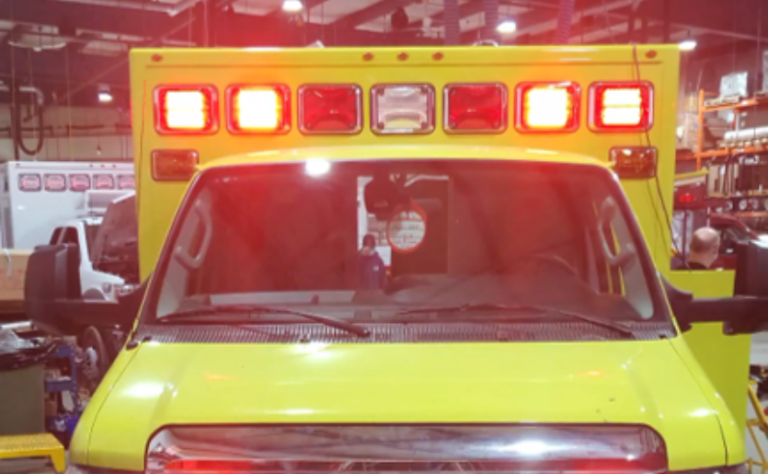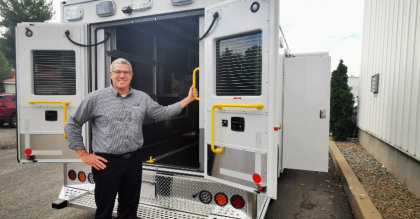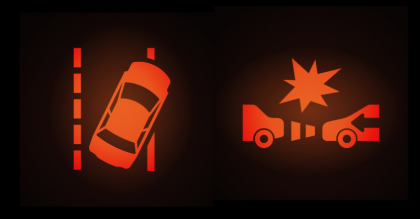Paramedics, the well-being of both you and those you serve is at the core of every emergency response mission. As the protectors of life on the frontlines, you recognize the utmost importance of creating a stable environment during those critical moments. In the ever-evolving world of emergency response, innovation becomes a crucial industry ally.
Crestline/Demers is proud to have introduced a combination of new multiplex capabilities, adding more functions to our vehicles on the road. While emergency lights have long been a crucial aspect of ambulance operations, the focus has now shifted to adding improvements and reducing blindness caused by emergency lights.
The Reason Behind the Concept
The incorporation of the MMC multiplex system into the fundamental design of our ambulances reflects our commitment to providing comprehensive solutions to our clients. We have integrated MMC multiplex as an integral component of every vehicle we build. This ensures that paramedics have access to ambulances equipped with the latest features from the outset, making their jobs more efficient and effective. Our focus on building these capabilities into the core of our ambulance design exemplifies our dedication to supporting the crucial work of paramedics with cutting-edge technology and functionality.
In terms of emergency lighting, this functionality will help enhance the ambulance’s adaptability to its surroundings by reducing the risk of blinding oncoming vehicles and potential accidents on the road.
The Issues with the Previous Model
Since the introduction of LED lighting technology, the intensity of emergency lighting has increased, becoming increasingly blinding at night. The night mode function reduces this intensity. What’s more, LED lights come on much faster than ordinary incandescent lights, which further increases the glare, just like the flash of a camera. This is one of the reasons why we need to control these lights to avoid causing vision problems.
Day/Night Mode
To tackle this issue, a photocell was added to the streetside of the vehicle that measures ambient light conditions on the road. This feature called Day/Night Mode, improves how emergency lights function. The photocell continuously monitors the surrounding light levels, ensuring that the brightness of the emergency lights is adjusted according to ambient lighting. Whether it’s day or night, or if the vehicle is passing through a tunnel, the Day/Night Mode guarantees that the emergency lights are always at the appropriate intensity, providing optimal visibility for everyone on the road. This innovation prevents blinding light in low-light conditions reducing the risks of accidents.
Issue of Previous Model
The primary and secondary lights had an ON/OFF constant flashing pattern. What’s more, LED lights come on much more quickly than ordinary incandescent lights, increasing glare even more, like a camera flash.
There was a study done by the Emergency Responder Safety Institute (ERSI) that came to the conclusion that higher-intensity lights were perceived as more glaring but only slightly more visible than lower-intensity lights. Lower-intensity lights remained highly visible, suggesting they could be used at night to reduce discomfort glare while maintaining visibility. We also analyzed a report that outlines the evolution of fire apparatus lighting standards, reviews two decades of research, and presents 2019 study results on LED transition before developing these new emergency light features.
Emergency Smooth Pattern
The Emergency Smooth Pattern mode seamlessly engages when the transmission is in the PARK position, with the emergency lights switched on. The Emergency Smooth Pattern reduces the flashing frequency and allows a fade-in, fade-out pattern instead. While driving, the lights maintain their standard configuration, ensuring visibility to surrounding traffic. However, when the vehicle transitions to PARK mode, the Emergency Smooth Pattern is activated, and the lights adopt a different, smoother pattern. This transition minimizes the intense flashing that could potentially cause glare, reducing the risk of temporary blindness for oncoming drivers and ultimately contributing to fewer accidents.
How to Use the New Emergency Lights System
The use of the emergency lights blind reduction system is completely automated and requires no special handling. The day/night mode automatically adjusts to the ambient brightness by dimming the light intensity when the brightness perceived by the photocell is sufficiently low. Smooth Pattern mode will activate automatically when the emergency lights are ON and the vehicle’s transmission is in Park. The 2 modes operate independently of one another and are combined when the situation requires them to be. For example, when the emergency lights are on at night and the transmission is in PARK, the 2 functions are combined to control a smooth pattern with reduced intensity catered for nighttime driving.
Improving Road Conditions for Everyone
The implementation of both multiplex functions (Day/Night mode and the Emergency Smooth Pattern function) marks a significant leap in enhancing road conditions for oncoming vehicles. These innovative features intelligently adapt to the surrounding environment and lighting conditions, reducing the likelihood of temporary visual impairment. In this way, they help create a less disruptive presence of emergency vehicles on the road. These functions will not only ensure optimal visibility but also pave the way for smoother traffic flow and fewer potential disturbances for drivers.







